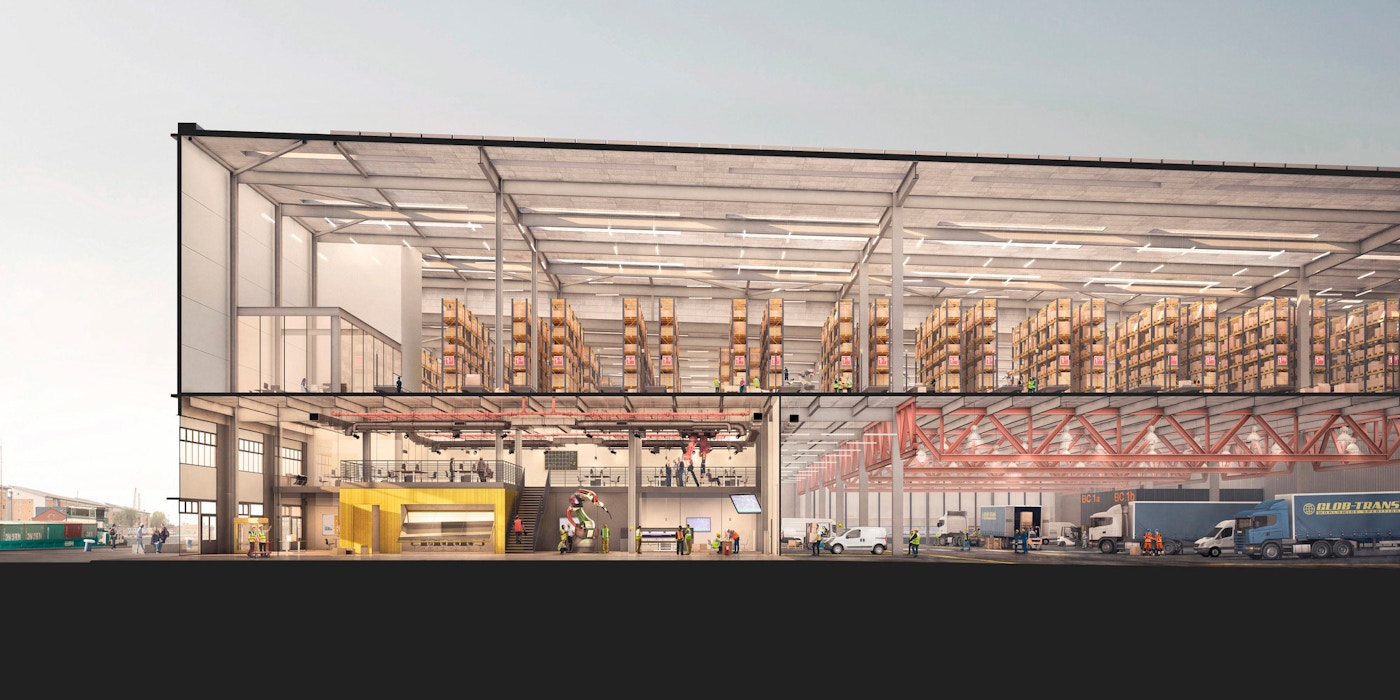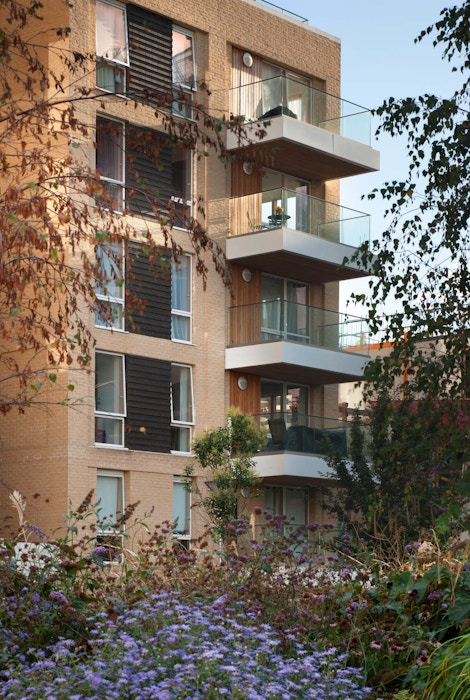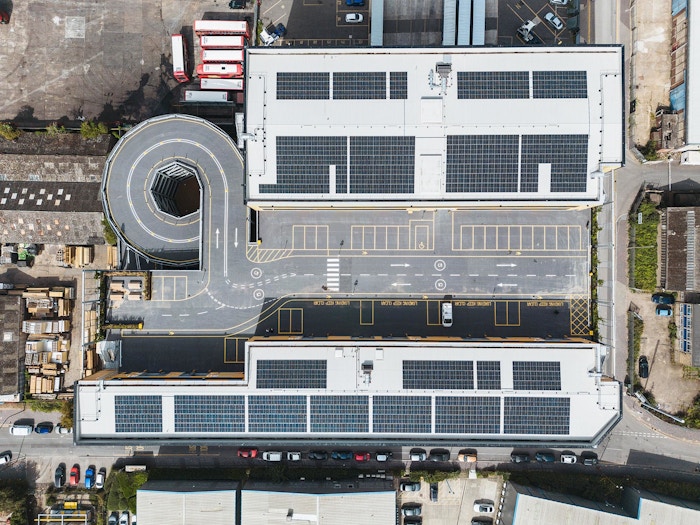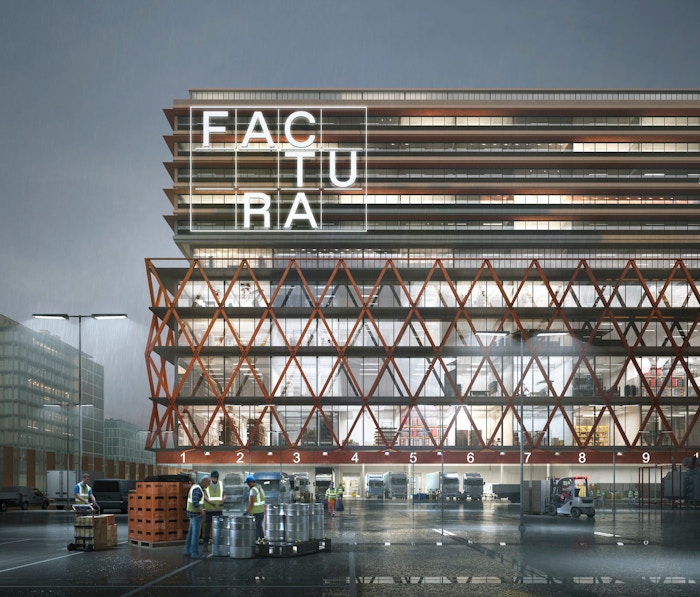—
workspace masterplan in the Royal Docks combining placemaking with industrial intensification to create a new piece of city

Albert Island historically formed the river frontage of the King George V Dock - the last of London’s upstream enclosed docks to be built, completed in 1921. Haworth Tompkins are working with London + Regional on a comprehensive redevelopment to create a well connected, sustainable employment hub with a mix of uses, good cycling and walking links, an enhanced river frontage and improved public realm establishing an integrated piece of the City.


As a large brownfield site zoned for industrial use, close to the centre of London and connected to the river, Albert Island represents a fantastic opportunity to create an exemplar industrial intensification project. The masterplan for the site includes a modern boatyard facility, regenerated marina, multi storey last-mile distribution warehousing and light industrial buildings, long term storage and flatted factory typologies, as well as new housing and a new HQ for the Royal Docks Management Authority.


The key to achieving the density and diversity has been co-locating and stacking different typologies and functions. To maximise land use for the industrial space, we have created a ‘table-top’ strategy which provides a transfer deck nine metres above ground, offering a steel ‘chassis’ frame onto which various enclosures are added. On the riverside frontage, the form incorporates a seven-storey, 80,000 sq ft flatted factory, the Ideas Factory, to accommodate a variety of start-up businesses and educational usages. This range of innovative, mixed-use multilevel industrial typologies, currently not delivered in the UK market, is an exciting exemplar solution for modern London’s urgent industrial needs.

The strategy for character and material qualities of each zone has been to create a family of different but related buildings, that read coherently across the whole island. We have chosen a pallete of materials and colours across the façades that share certain characteristics and complement each other, but allow differences between zones to be expressed, and are supported by a shared supergraphics and wayfinding strategy across the whole site.


The project received planning permission in March 2021, with an anticipated start on site in 2024, and completion in 2026.




